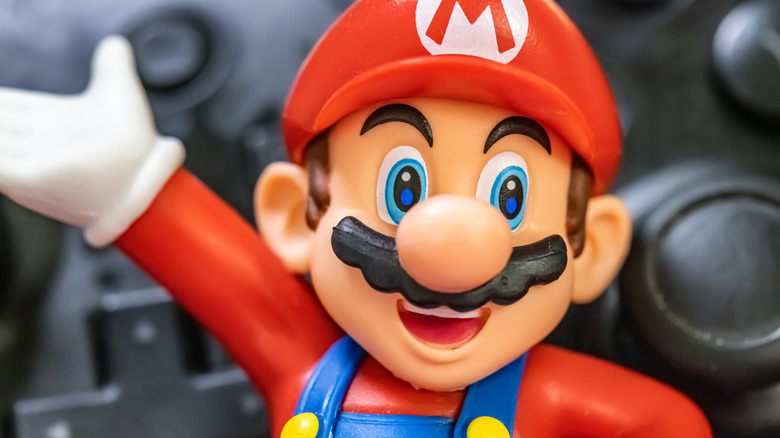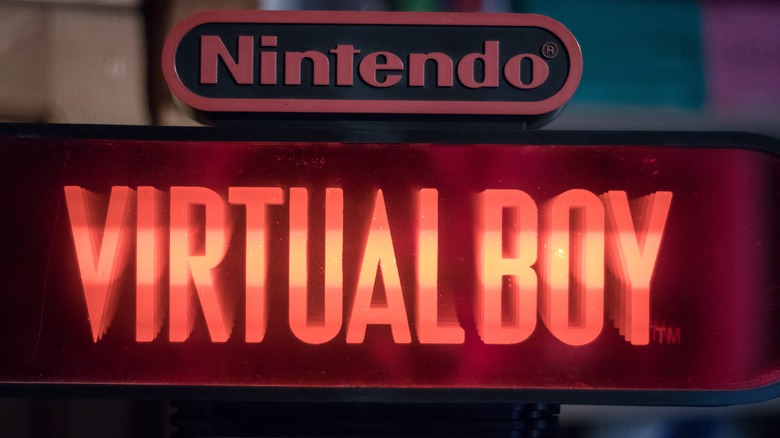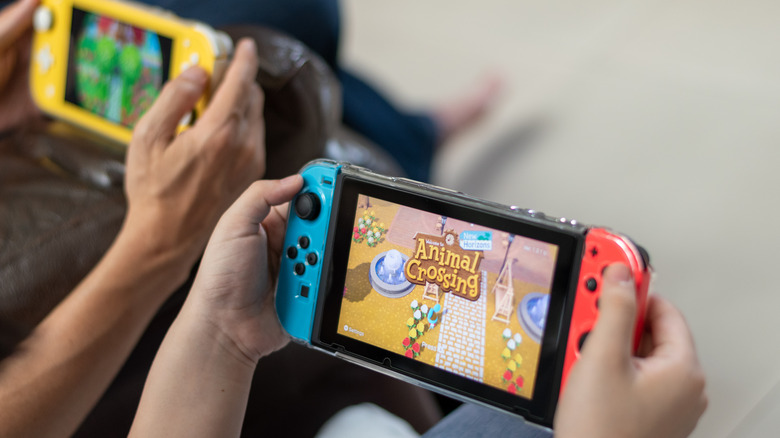The Real Reason The Nintendo Virtual Boy Flopped
Nintendo is known for its many successes within the video game world, such as the older Nintendo 64 or the Nintendo Switch. Behind all of its hit consoles, though, lie some products that flopped in their time. Thankfully, these proved to be minuscule road bumps for the company, and it has since pushed these failures into the shadows while focusing attention on the more successful consoles.
One of these consoles that Nintendo has let fade into obscurity is the failed 1990s-era Virtual Boy. The Virtual Boy was a VR-like console that promised 3D capabilities way ahead of its time. It came with a mounted eyepiece, in which a player would peer into to view the screen, with something of a similar look to the VR headsets of today. Nintendo marketed the Virtual Boy as an innovative, unique experience. While it certainly was in theory, it didn't recieve the reception Nintendo expected.
Why the Virtual Boy failed
Although Nintendo tried to portray the Virtual Boy as a step forward for video game consoles, this one was actually taking several steps backward. The Virtual Boy had only a monochrome red-and-black screen, was not portable in the same way the Game Boy was, and many found the 3D effects didn't really add much to the overall experience of the games, according to Business Insider. Furthermore, the games themselves were deemed lackluster and didn't garner much excitement from players. Only 22 Virtual Boy games were ever released. Not to mention that the Virtual Boy came with a breadth of potential health hazards, including nausea and eye strain (via Business Insider).
In fact, Nintendo needed to issue a warning about these health hazards with the console. It also stated that allowing young kids to play the Virtual Boy could lead to lasting vision issues. This is the more extreme end of the health issues with the console, but players also reported back problems from having to bend into the headgear on the tripod instead of being able to wear it. Headaches were also widely reported.
These shortcomings led the Virtual Boy down a path of destruction. The initial price of the console at its release in 1995 sat at $179.95, but Nintendo eventually had to decrease this over time as sales stagnated. In all, only 770,000 units were sold in total (via Fast Company), a very small number compared to the Game Boy, which had 40 million in total sales. This complete lack of interest in the Virtual Boy caused Nintendo to discontinue it a year later.
Nintendo's future of success
After the failure of the intended 3D Virtual Boy, you might expect Nintendo would stay far away from anything of that ilk. And it didn't revisit 3D until it eventually created the Nintendo 3DS, released in 2011. This was a handheld system similar to the Nintendo DS and DSi before it, but with 3D capabilities that required no glasses. It instead used a stereoscopic effect to achieve depth on screen. Unlike the Virtual Boy, the Nintendo 3DS and its successor, the 3DS XL, enjoyed more success. It was well received by critics, and according to IGN's first-look review, the 3D effect "is immediately obvious, yet seems so natural." Although initially, the handheld didn't sell very well, after a price drop, the 3DS sold 75.94 million units overall (via Nintendo).
Even more than the 3DS, Nintendo's most up-to-date console, the Switch, has performed remarkably as its best-selling console to date with 111.08 million units sold, per Nintendo. The Switch exhibits all the best qualities of a Nintendo console, with comfort, portability, fun and exciting games, and great visuals. It became very popular among critics as well, especially with smash-hit games such as The Legend of Zelda: Breath of the Wild. This outcome is markedly better than the Virtual Boy, and a testament to the fact that Nintendo truly knows how to rebound from its mistakes.


